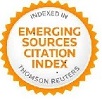Ekphrasis and Enargeia in the Thucydidean Historiography and the Philosophical Thought of Paul Ricoeur
Keywords:
Thucydides, Ricoeur, ekphrasis, enargeia, mimesis, rhetoric, history and fictionAbstract
In the Greek schools of the Roman Empire, the handbooks of rhetoric (Progymnasmata) defined ekphrasis as a speech that brings the subject matter vividly before the eyes. These manuals also point to Thucydides as one of the best specialists in this rhetorical technique which consisted, essentially, to give vividness (enargeia) imagery to the speech as a way to engage the imagination and feelings of the reader. In this article we present a set of examples, taken from the History of the Peloponnesian War, which prove the skill of the Athenian historian to make us “see” the events in the mind's eye. After that and using the opinions of Paul Ricœur around history and fiction (from the normal and healthy coexistence between readability and visibility along with the ethic power of the textual image in situations that cry out applause or disapproval), we will see how this rhetorical and fictional strategy, used by Thucydides and recovered now by Ricoeur for the studio of contemporary historiography, can be reconciled with a discipline that aims at objectivity, impartiality and scientific rigor
Downloads
References
BARTHES, R. (1984), Le Bruissement de la langue, Paris: Seuil.
BRUNT, P. A. (1993), Studies in Greek History and Thought, Oxford: Clarendon Press.
CALAME, C. (1991), “Quand dire c’est faire voir : l’évidence dans la rhétorique antique”, Études de Lettres, 4, 3-22.
____ (2007) “Entre historiographie et fiction : indice, témoignage et tradition poétique (Hérodote et Thucydide)”, Vox Poetica (15/01/2007), in http://www.vox-poetica.org/t/rl/calameRL.html
CHARTIER, R. (2002), “Le passé au présent”, Le Débat 122, 4-11.
CHATELET, F. (1962), La naissance de l’Histoire, Paris: Minuit.
COCHRANE, C. N. (1929), Thucydides and the science of history, London: Oxford University Press.
CONNOR, W. R. (1984), Thucydides, New Jersey: Princeton University Press.
CRANE, G. (1996), The Blinded Eye. Thucydides and the new written word, Boston Way, Lanham, Maryland: Rowman & Littlefield.
DOSSE, F. (2000), L’histoire, Paris : Armand Colin.
FINLEY, J. H. (1942), Thucydides, Cambridge, Massachussets: Harvard University Press.
FINLEY, M. (1981), Mythe, Mémoire, Histoire, Flammarion: Paris.
FRIEDLANDER, S. (org.) (1992), Probing the Limits of Representation. Nazism and the “Final Solution”, Cambridge, Mass., London: Harvard University Press.
GINZBURG, C. (1989), “Montrer et citer: la vérité de l’histoire”, Le Débat 56, 43-54.
____ (1999), History, rhetoric, and proof, Hanover and London: University Press of New England.
GOLDHILL, S. (2007), “What is ekphrasis for?”, Classical Philology 102/1, 1-19.
GOLDHILL, S. & OSBORNE, R. (eds.) (1994), Artand Text in Ancient Greek Culture, Cambridge: Cambridge University.
GOMME, A. W. (1954), The Greek attitude to poetry and history, Berkeley and Los Angeles: University of California Press. .
GRAY, V. (1987), “Mimesis in greek historical theory”, American Journal of Philology108/3, 467-486.
HARTOG, F. (1980), Le miroir d’Hérodote : essai sur la représentation de l’autre, Paris: Gallimard.
____ (2005), Évidence de l’histoire, Paris: Gallimard.
HORNBLOWER, S. (1987),Thucydides, London: Duckworth.
HUNTER, V. (1982), Past and process in Herodotus and Thucydides, New Jersey: Princeton University Press.
IGLESIAS-ZOIDO, J. C. (2006), “El sistema de engarce narrativo de los discursos de Tucídides”, Talia Dixit 1, 1-28.
____ (2011) El legado de Tucídides en la cultura occidental - Discursos e historia, Coimbra: CECH.
KEMMANN, A. (1996), “Evidentia”, en G. Ueding (ed.), Historisches Worterbuch der Rhetorik, vol. III, Tubingen, Darmstadt: Niemeyer, cols. 33-47.
MARIN, L. (1981), Le Portrait du roi, Paris: Minuit.
____ (1993), Des pouvoirs de l’image, Paris: Seuil.
MOMIGLIANO, A. (1984), La historiografia griega, Barcelona: Editorial Crítica.
____ (1992), Les fondations du savoir historique, Paris: Les Belles Lettres.
MORAUX, P. (1954), “Thucydide et la rhétorique”, Les Études Classiques 22, 3-23.
PARRY, A. M. (1989), “The language of Thucydides’ description of the Plague”, The Language of Achilles and other papers, Oxford: Clarendon Press.
____ (1972), “Thucydides’ historical perspective”, Yale Classical Studies 22, 47-61.
PINEDA, V. (2008), “Verdad, ficción y estrategias narrativas: nuevas perspectivas historiográficas”, Talia Dixit 3, 105-121.
PIRES, F. M. (2003), “Thucydide et l’assemblée sur Pylos (IV.26-28): rhétorique de la méthode, figure de l’autorité et détours de la mémoire”, The Ancient History Bulletin 17, 127-148.
PROST, A. (1996), Douze Leçons sur l’histoire, Paris: Seuil.
RICOEUR, P. (1985), Temps et Récit, III : Le temps raconté, Paris: Seuil.
____ (2000), La mémoire, l’histoire, l’oubli, Paris: Seuil.
RANCIERE, J. (1992), Les noms de l’histoire. Essai de Poétique du savoir, Paris: Seuil.
ROMILLY, J. (1956), Histoire et raison chez Thucydide, Paris: Les Belles Lettres.
WALKER, A. D. (1993), “Enargeia and the Spectator in Greek Historiography”, Transactions and proceedings of the American Philological Association 123, 353-377.
WEBB, R. (2009), Ekphrasis, imagination and persuasion in ancient rhetorical theory and practice, Surrey: Ashgate.
WHIRTHMARSH, T. (2002), “Written on the body: ekphrasis, perception and deception in Heliodorus’ Aethiopica”, en J. Elsner (ed.), The Verbal and the Visual: Cultures of Ekphrasis in Antiquity, Victoria: Aureal = Ramus 31, 111-135.
WHITE, H. (1973), Metahistory: The Historical Imagination in Nineteenth-Century Europe; Baltimore: Johns Hopkins UP.
____ (1985), Tropics of Discourse: essays in a cultural criticism, Baltimore and London: The Johns Hopkins UP.
WOODMANN, A. J. (1988), Rhetoric in Classical Historiography. Four studies, London and Sydney: AP.
ZANGARA, A. (2007), Voir l’histoire. Théories anciennes du récit historique, IIe siècle avant J.-C. – IIe siècle après J.-C., Paris: Vrin.
ZANKER, G. (1981), “Enargeia in the Ancient Criticism of Poetry”, Rheinisches Museum 124, 297-311.
ZEITLIN, F. (1994), “The artful eye: vision, ekphrasis and spectacle in Euripidean theatre”, en Goldhill, S. & Osborne, R. (eds.), Artand Text in Ancient Greek Culture, Cambridge: Cambridge University, pp. 138-196.












